Review: The musical view from Mexico and Bali (by way of Northridge and Santa Monica)
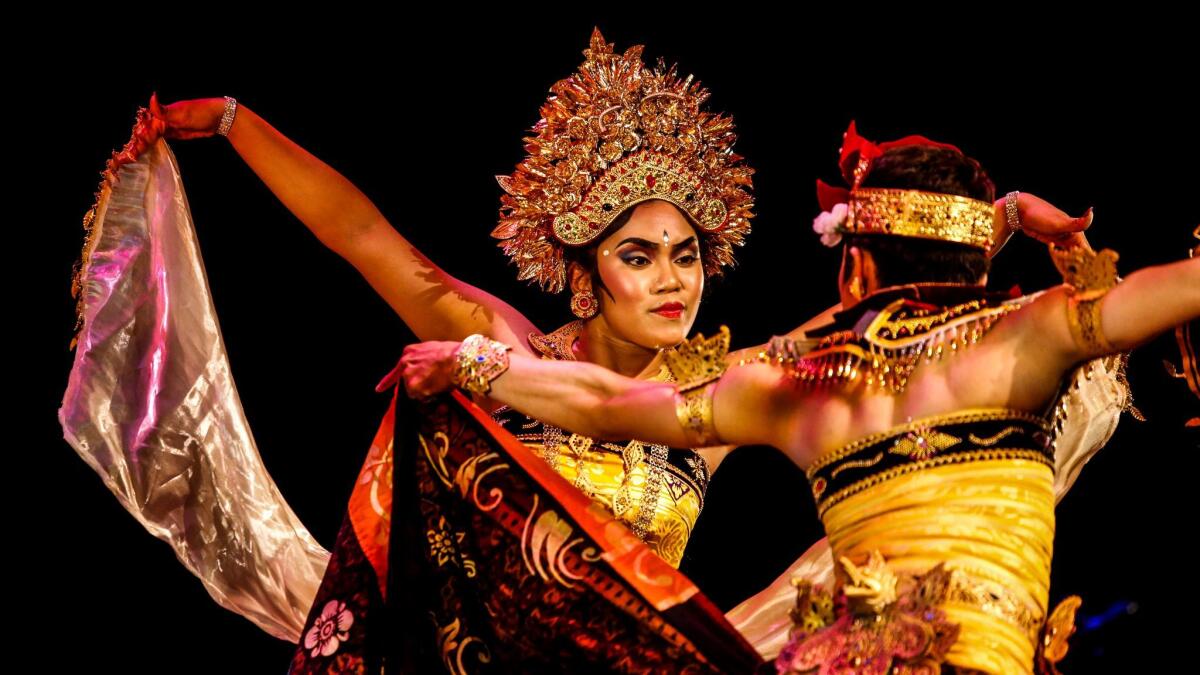
- Share via
Does it make any sense to make world music a genre, as we lump together African drumming, Indian raga, Tuvan throat singing and the music of hundreds of other cultures into one big other, distinct from the global domination of commercial and classical Western music?
That was the question Sunday when I went from a matinee performance of a great mariachi band to an evening concert by a great Indonesian gamelan orchestra in the half-hour it took to drive from Northridge to Santa Monica.
To fly from Tecalitlán, the Mexican city that gave us Mariachi Vargas de Tecalitlán, to Pengosekan, the Bali home of Gamelan Cudamani, is a minimum 33 hours — and even that is far too little time to prepare for culture shock.
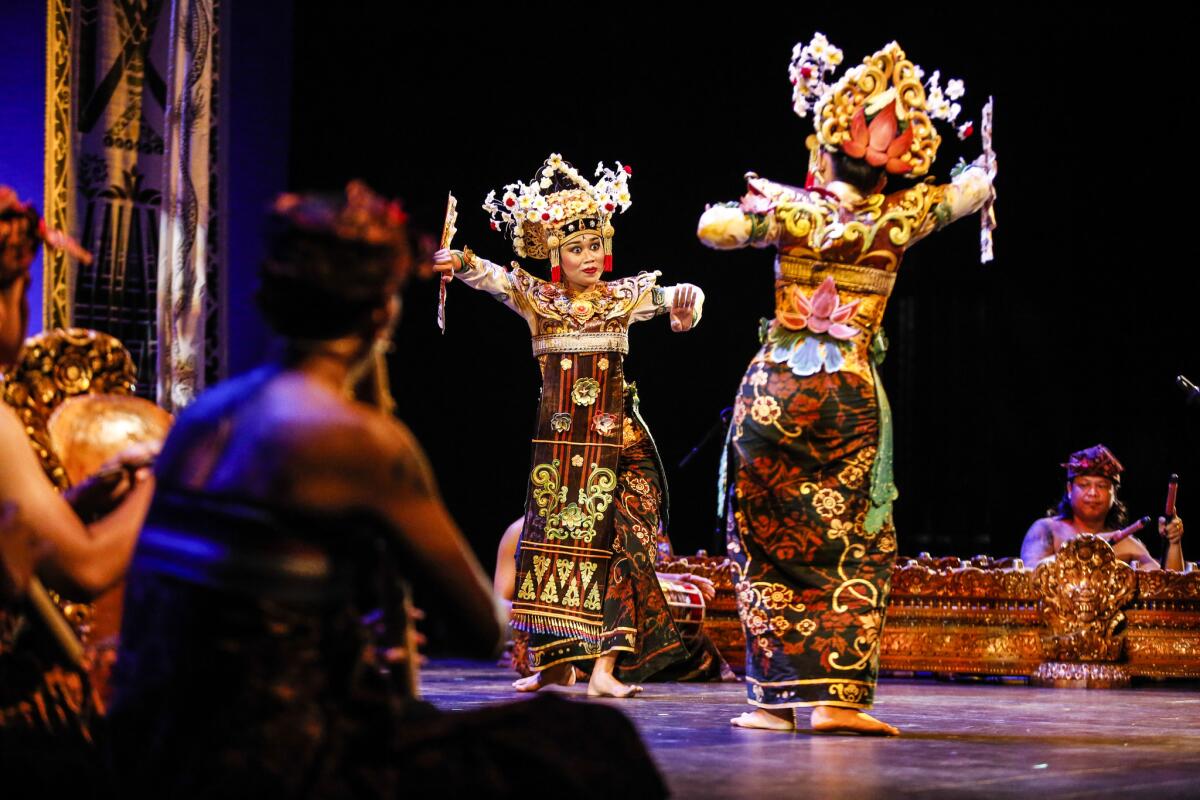
Mariachi Vargas de Tecalitlán was the centerpiece Sunday afternoon for José “Pepe” Martínez’s “mariachi opera” “Cruzar la Cara de la Luna” (To Cross the Face of the Moon) at the Younes and Soraya Nazarian Center for the Performing Arts, a.k.a. the Soraya, as the Valley Performing Arts Center is now called. Gamelan Cudamani began a California tour at the Broad Stage with a series of musical and dance pieces titled “Bhumi” (“Mother Earth”).
On all the obvious levels, no shows could be less connected than these. “Cruzar” was commissioned by Houston Grand Opera to connect its own two seemingly distant musical genres — mariachi and opera. In fact, they’re a lot closer than you might imagine.
Mariachi developed in western Mexico by merging Spanish with indigenous music in the 18th century, just around the time European opera was coming into its own. Mariachi opera turns out to be exactly the same kind of spoken theater with song as Mozart’s “The Impresario,” which the Los Angeles Philharmonic performed last week.
Gamelan music is some 16 centuries older than the mariachi, although the 20-year-old Cudamani is a century younger than Mariachi Vargas. But if we look back to the indigenous roots of mariachi, we find more commonalty, especially in the ritualistic and religious origins of the two musical traditions.
MARIACHI OPERA: Dreamers turn out to for an immigrant's tale »
There was similarity even in the setups of the two shows. Mariachi Vargas lined the back of the Soraya stage. The players were dressed in their impressive uniforms, sombreros leaned on the floor against their music stands. With their violins, guitars, trumpets and percussion, they presented a dignified formality that signaled a long tradition. They played with a precision and intensity that suggested a moral force.
The gamelan musicians also lined the back of the stage at the Broad Stage. Formally robed and with lavish headdress, they too proved the epitome of tradition and devotion.
Little, of course, was similar stylistically, and for an American audience Cudamani is far more foreign and exotic. But despite musical and movement devices not ours, the performances had stunning immediacy simply by being astonishingly good.
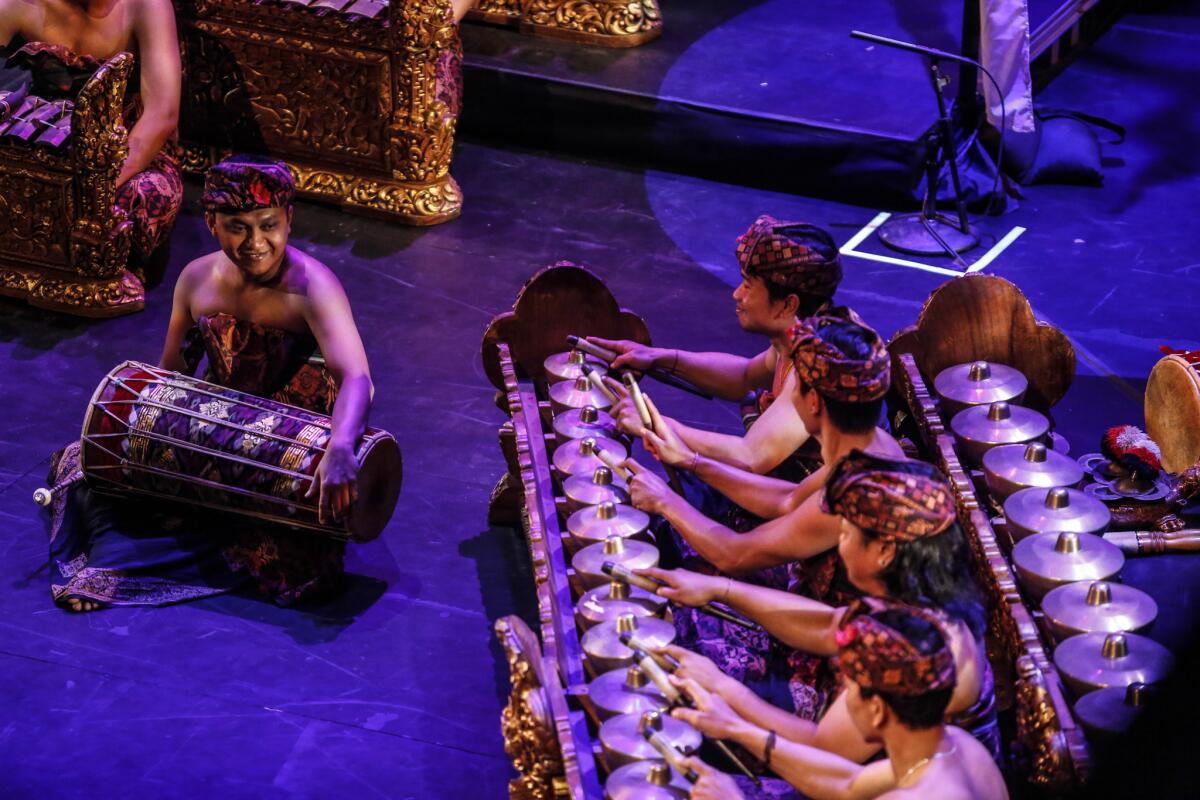
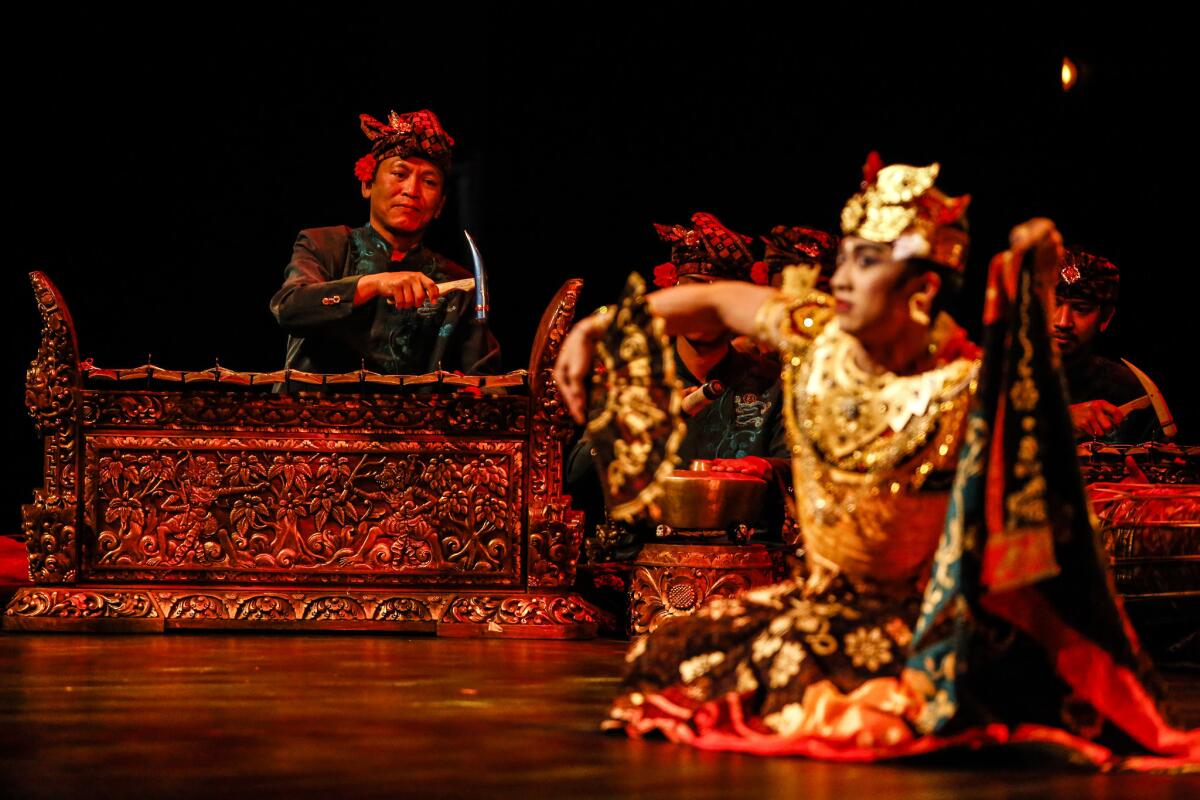
The vibrancy of the gamelan orchestra, with its synchronized gongs and bells, poignant flute and vocal melodies, transcended in sheer brilliance the specific implications of harmonic modes and other technical procedures. The intricacies of hand and foot gestures in dance accomplished the same transcending act, whatever their specific meanings may be.
The care applied to every aspect of Cudamani’s presentation — be it the spectacular details of costumes, make-up, masks or application of color (visual, musical or light) — produced an equal devotion in the viewing and listening experience. The program notes spoke of each number being in some way related to the idea of healing the Earth. And the only way we can do that is by listening to and watching our planet with utter attention.
Cudamani revealed that in a wide range of raptly evocative ways. By instantly changing expressions with his eyes — or fingers, or fan, or fanny — a male dancer could one second be masculine, the next feminine. In so doing, he became a profound symbol of Mother Earth as source of all things.
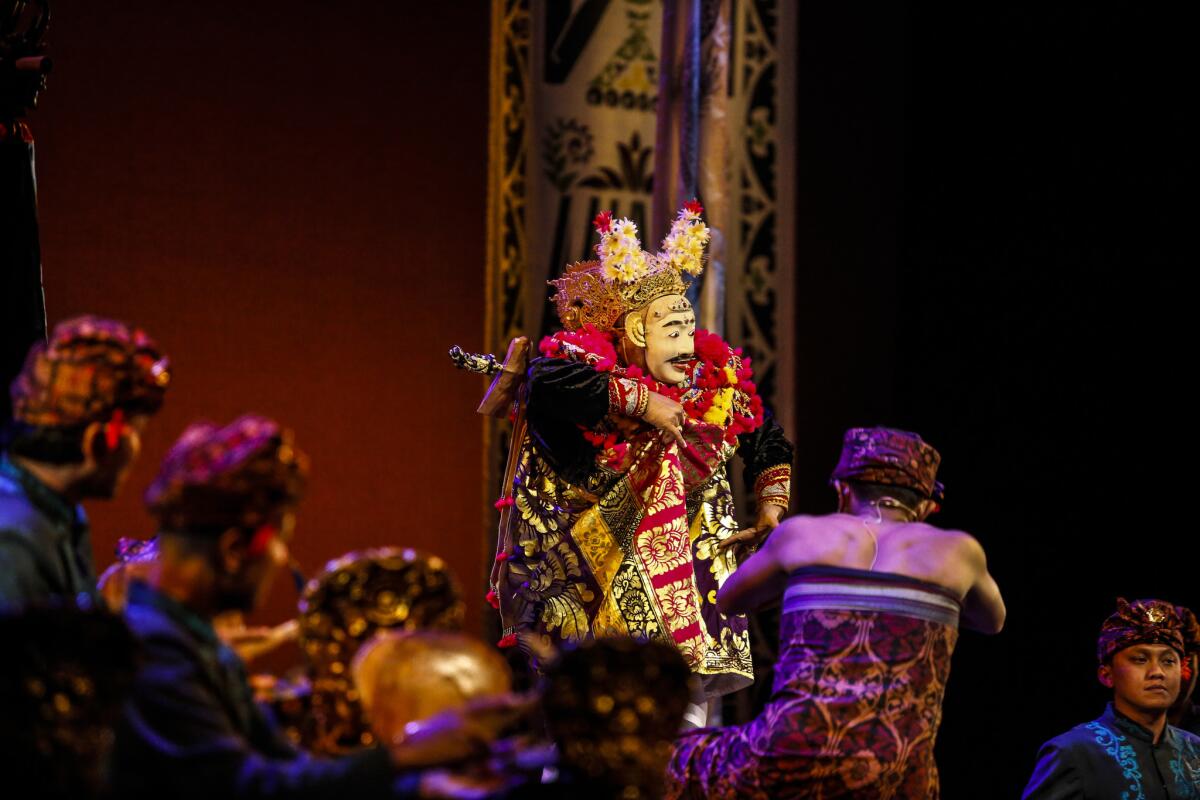
On the other hand, a responsible leader is allowed no facial expressions at all. A masked dancer demonstrated that wisdom is connected to an unfazed gentleness of gaze, with fingers and feet doing the expressive hard work of remaining ever grounded. This, we were told, was meant as a special offering to the company’s host country.
In other dances, a bee pollinating a flower was treated as an exchange of beauty, while also reminding us that an ugly flower can leave a lasting heavenly fragrance, as we must when we depart Earth. At the end, men of the gamelan removed their jackets and hilariously leaped up from their instruments to hop and croak like virtuoso frogs who then evolve up the species ladder into a raucous community of brotherhood. There is nothing like this.
The message of “Cruzar” is also healing, here of personal wounds caused by severed geography, as well as a gently veiled message on the role of leadership. The opera further concerns a spiritual journey with nature, in this case the butterfly, as its guide.
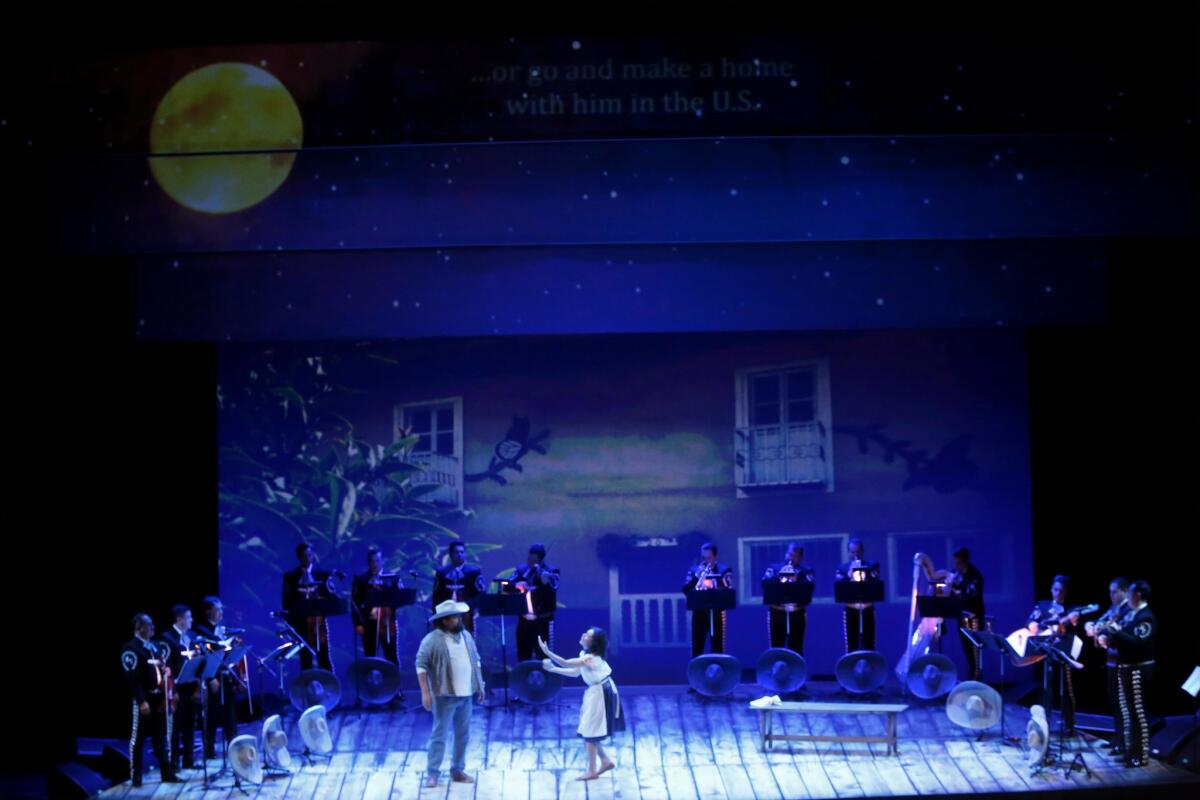
An elderly Mexican laborer, who left his village to build a new life in America, lays dying and looks to a new generation to find common bonds. His case is personal, his unreconciled family split between Texas and his homeland, but he is further a symbol of the relationship between neighboring countries. He dwells on the migration of the monarch butterfly he watched as a boy in Mexico and which became the symbol of his spiritual journey.
“Cruzar” features Spanish songs by Martínez, the late director of Mariachi Vargas, and a spoken English text by the American director and librettist Leonard Foglia. The opera has caught on since its Houston premiere in 2010 — New York City Opera presented it last month — mainly because of the currency of its story.
The Soraya was the first venue to give “Cruzar” a new production. It was sensitively directed Dan Guerrero and faithfully conducted by José “Pepe” Martínez Jr., the composer’s son. An excellent cast came from the worlds of opera, Broadway and Mexican and American television. That’s all a seemingly long way from Bali.
Still, Foglia’s poetic imagery and Martínez’s songs shared a mutual respect for nature and the application of art as a unifying force. The composer’s lyric melodies have a Bali equivalency when it comes to direct emotional expression. But just like the gamelan, Martínez’s mariachi music, by being upbeat yet restrained, serves as a resilient maudlin-buster, the implication in every beat of a higher purpose.
Separated by 10,000 miles and many centuries, gamelan and mariachi are much more distant historically, geographically and culturally than, say gangsta rap and Gregorian chant. But here Mexicans and Indonesians are startlingly close in their ecological and spiritual worldview. Instead of calling it world music, we might consider it worldview music.
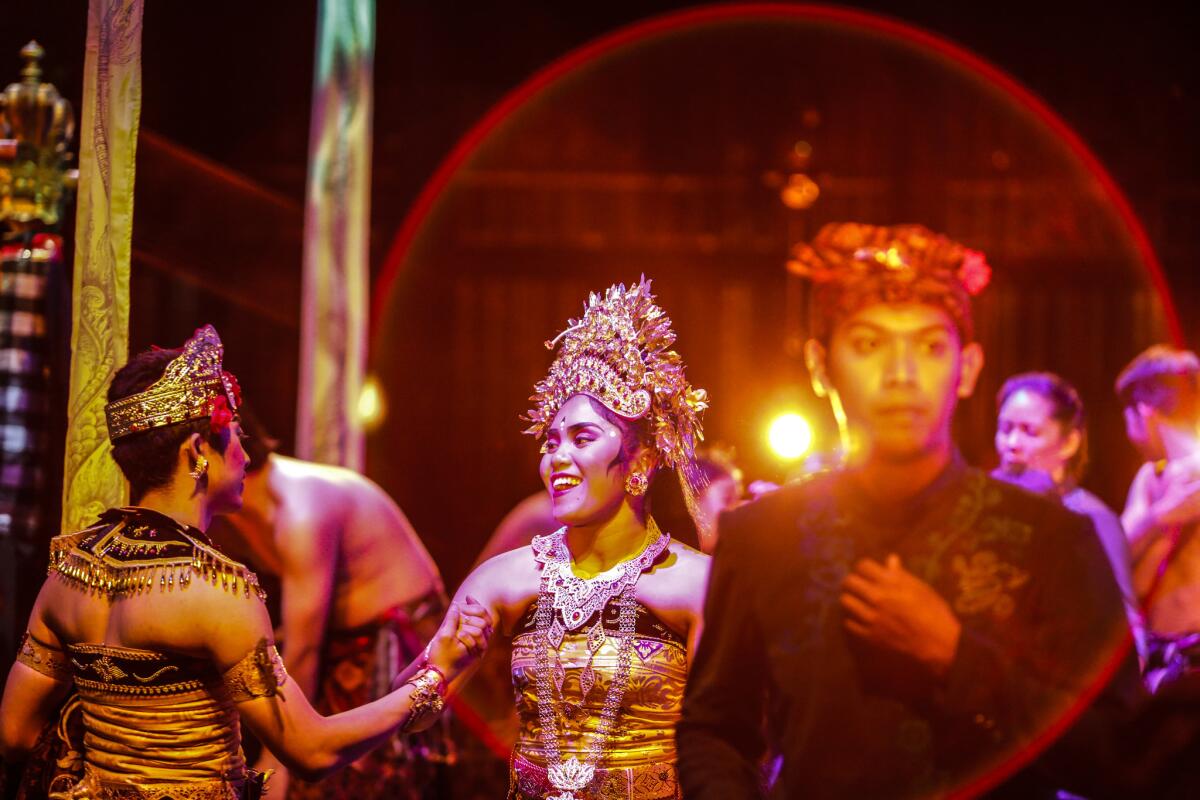
MORE MUSIC
At Actors' Gang, the tired, the poor, the huddled masses
Cue the mermaids, it's Esa-Pekka Salonen's 'Wing on Wing'
A century-old suffragist's story inspires girls to 'Hear Our Voice'
The biggest entertainment stories
Get our big stories about Hollywood, film, television, music, arts, culture and more right in your inbox as soon as they publish.
You may occasionally receive promotional content from the Los Angeles Times.








